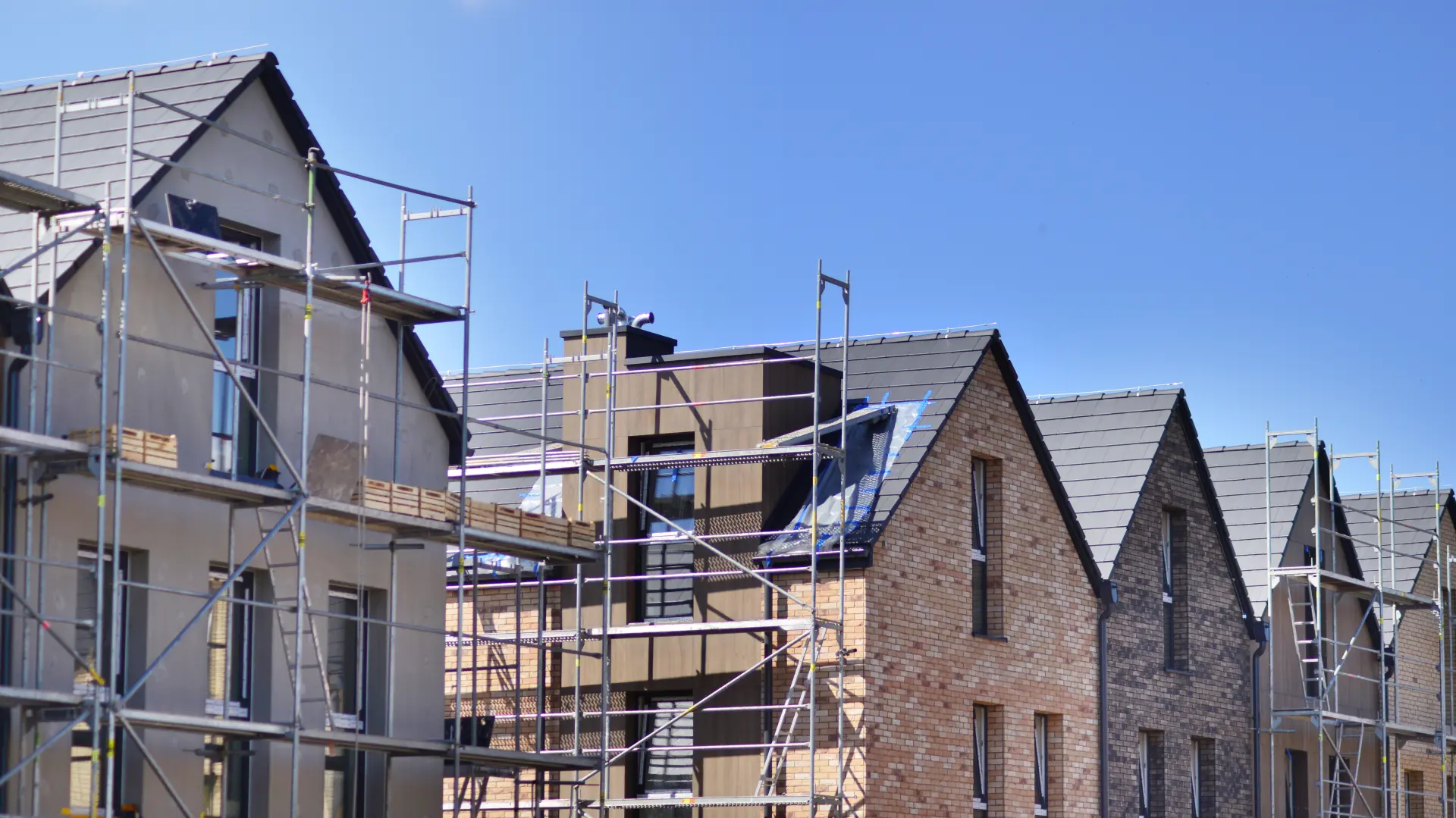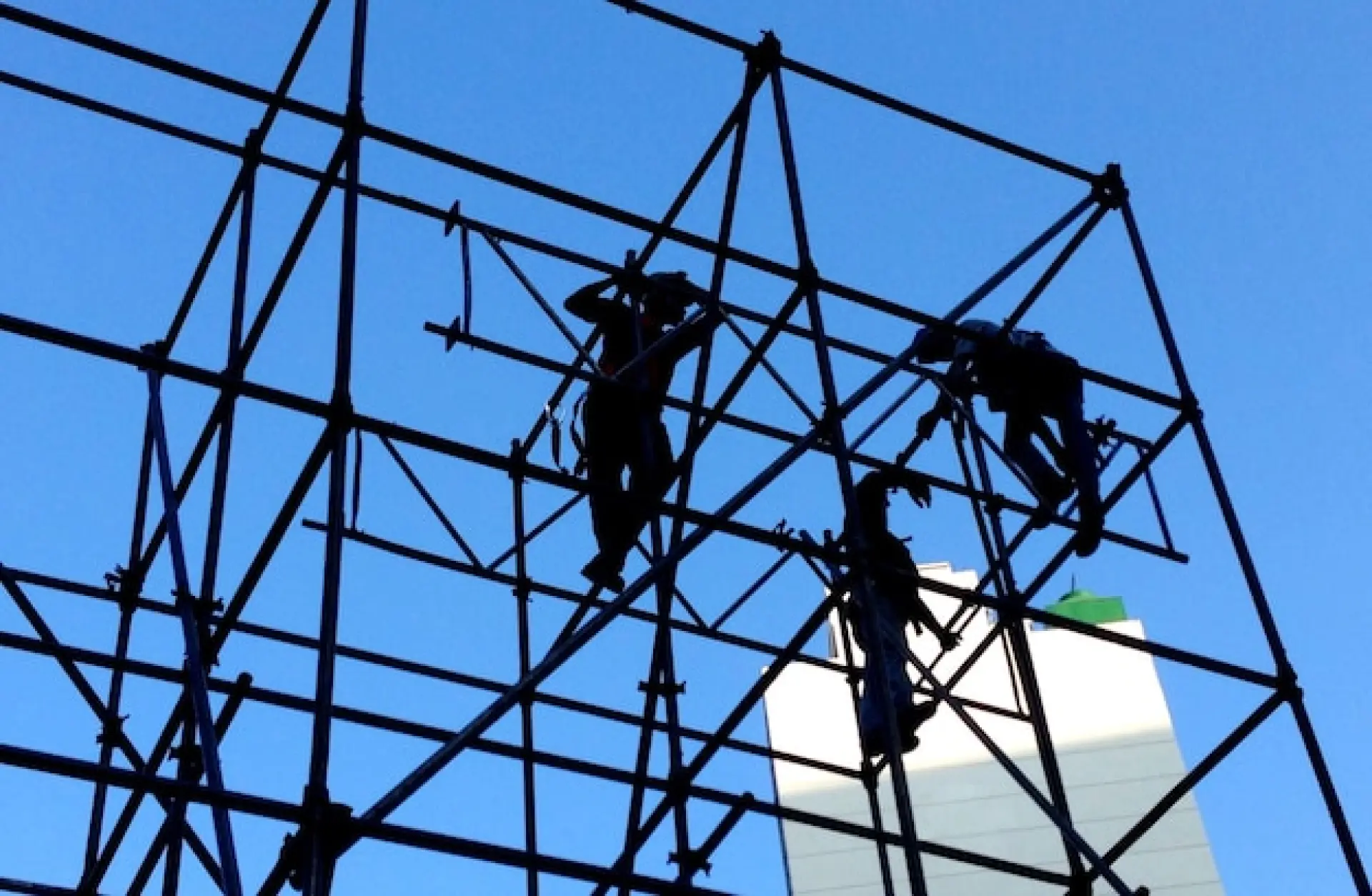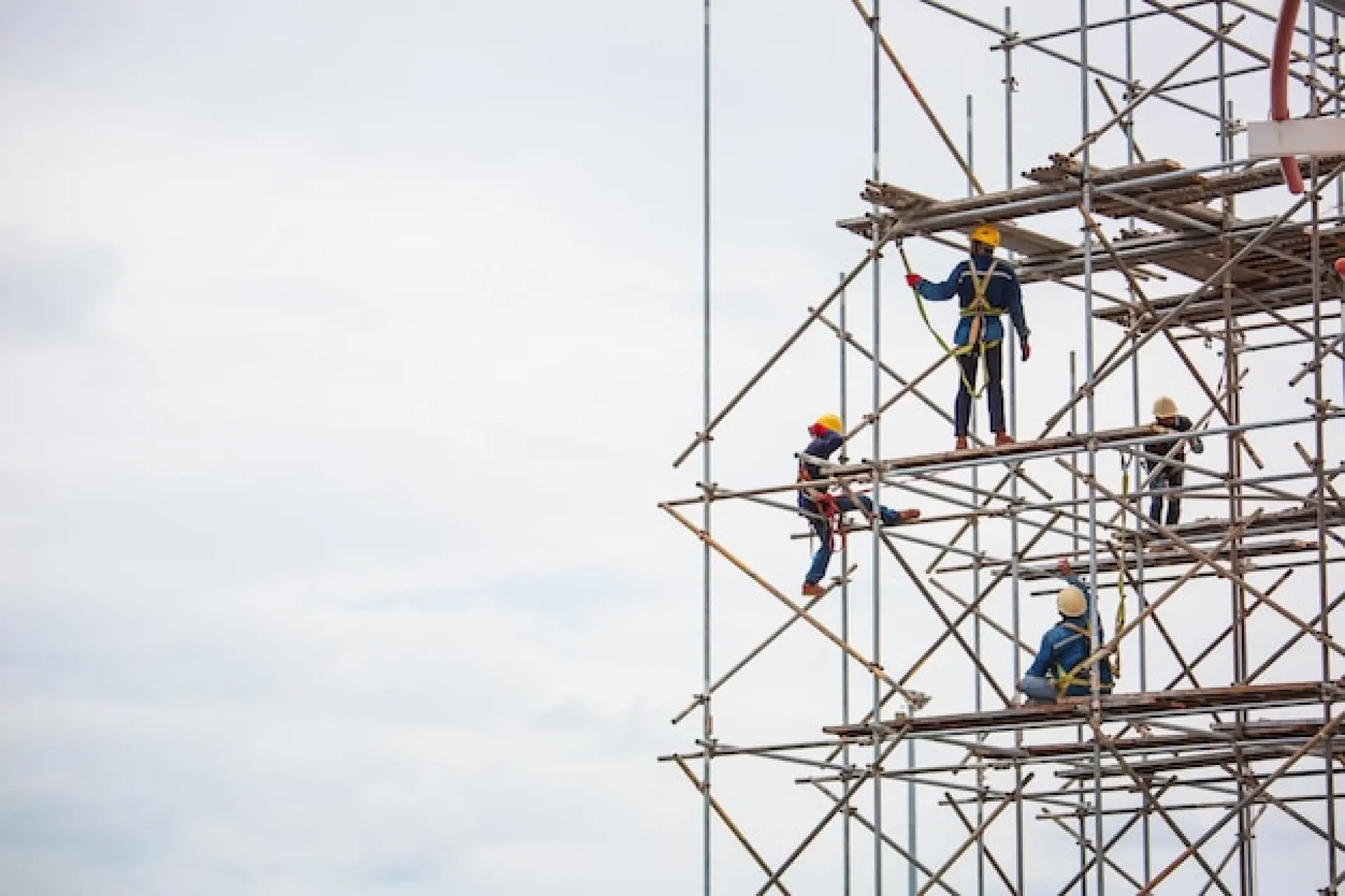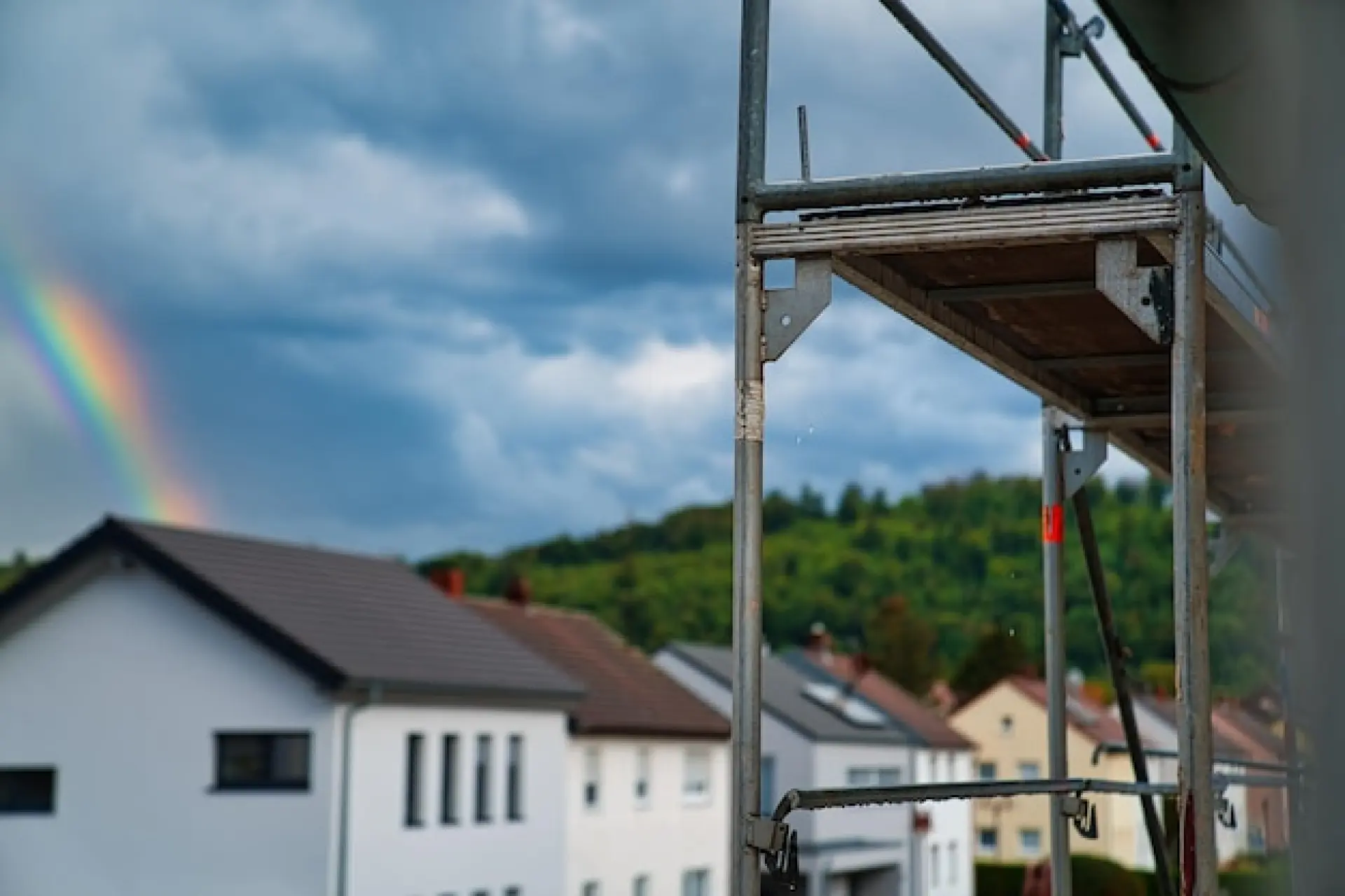How Temporary Roof Scaffolding Shields Against Rain
Temporary roof scaffolding uses lightweight aluminium trusses and tensioned keder or shrink-wrap sheeting to span across the roof, seal the perimeter and divert rain and wind while letting daylight in. These clear sheets preserve natural light, and added ridge vents or controlled openings prevent condensation from building up, which helps maintain the air quality and protect the tools and materials on-site. Temporary gutters, taped seams, and well-detailed overlaps are also used to channel water off the structure and stop any drips from entering the work areas.
Masonry, timber, screeds and roofing membranes all have critical drying times, and unexpected downpours can delay work or cause long-lasting issues. Temporary roofing is a dry shell that's placed over the work area, so that workers can continue with their strip-outs, re-roofing, leadwork or solar installations without needing constant stops. It also protects sensitive plaster, electrics and finishes from staining and swelling, and it helps prevent mould and mildew from forming.
Protecting Against Wind and Storm Damage
Temporary roof scaffolding isn’t just for keeping rain off the roof; it’s also engineered to resist wind and storm damage so that work can continue safely and predictably. Temporary scaffolding is used to form a rigid, tied framework around the building that's topped by lightweight trusses and tensioned sheeting. When storms hit, the braced scaffolding provides defined load paths so that wind pressures can transfer from the roof sheeting into the structure below. Diagonal bracing, rakers, and correctly spaced ties can also prevent racking and sway, which helps keep the canopy stable so the coverings don’t flap, tear or unzip.
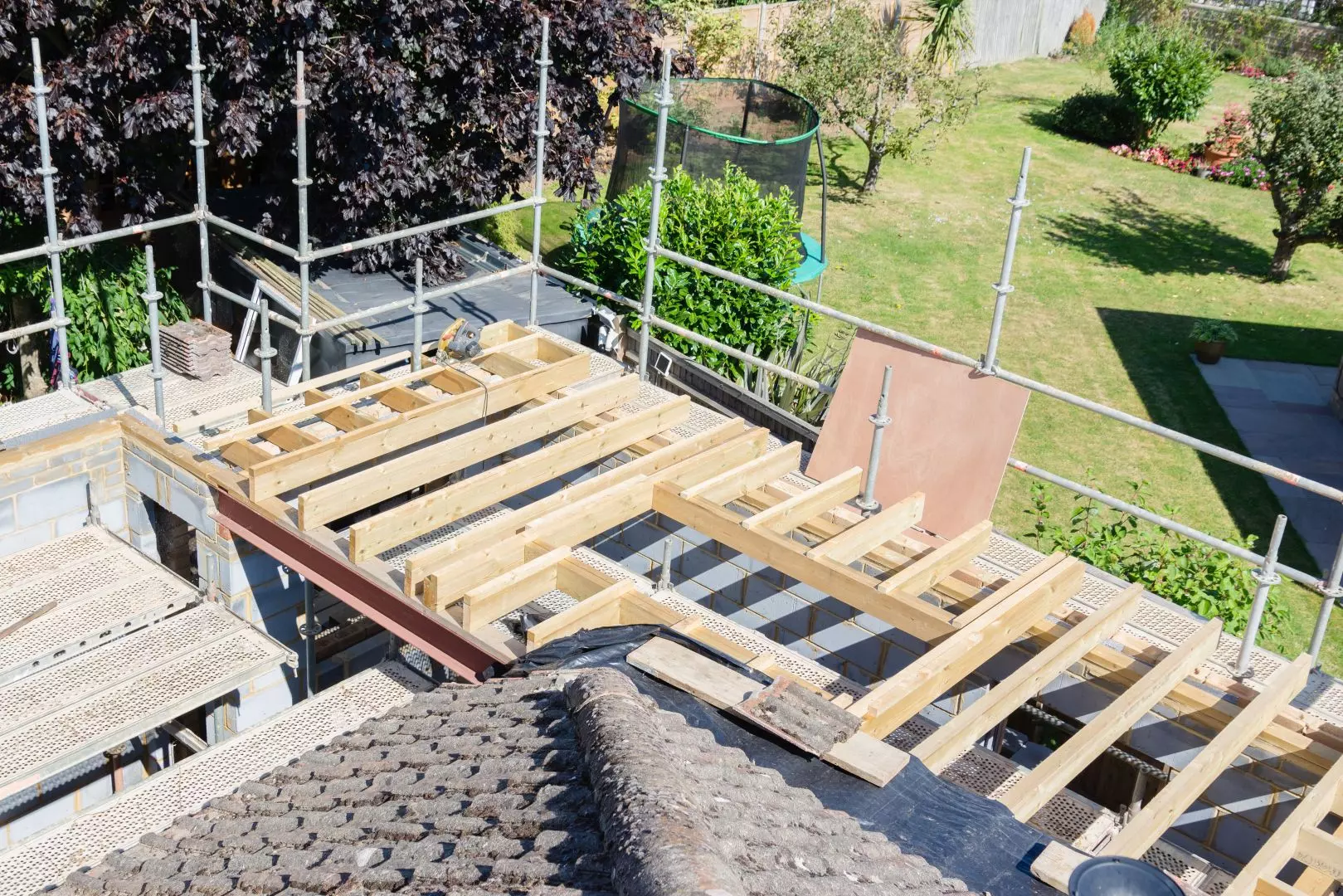
Modern temporary roofs use overlapping bays, sealed seams, and edge baffles to limit turbulence and reduce the risk of uplift. If the facades are open, the perimeter screens act as wind skirts to reduce the amount of internal pressure. Wind-lock clips, anti-lift restraints and storm lashings also secure the sheets and bays, and temporary gutters channel wind-driven rain away so that it can’t pool or add weight to the roof.
High winds can turn loose materials into projectiles; however, a contained, secured canopy can prevent debris from escaping and protect workers on-site. Additionally, slip risks on wet, wind-lashed decks are also reduced, and duty-holders can meet UK CDM requirements.
Storms can also shut down jobs for days. Temporary roofs can keep critical tasks like strip-and-recover roofing, leadwork, and timber repairs moving and help you avoid remobilisation and subcontractor downtime.
Preventing Water Leaks and Damp Problems
Temporary roof scaffolding is a sealed, controlled layer that's placed over running projects so that water can’t reach vulnerable areas. Lightweight trusses span across the roofline, and the joints are taped, stitched, or clipped to form a continuous barrier that sheds rain just like a permanent roof. At the perimeter, temporary gutters and downpipes are used to collect water runoff and direct it away from the base to prevent splashbacks and saturated ground that could let moisture into the walls.
The sheet laps are oriented with the wind, the ridge saddles are double-sealed, and the penetration points for hoists or chimneys are collared with flexible flashings to stop water from seeping through. On the inside, ridge vents, mesh zones, or timed openings are added to limit the amount of condensation that's formed on cold mornings. This is important since condensation droplets can mimic leaks and soak the insulation, timber and boards. With the right airflow management, your roof surfaces can stay dry and your materials can retain their designed moisture content.
Persistent damp is one of the most expensive and disruptive risks on-site. Water ingress stains plaster, ruins skim coats and warps floors. It can also swell the MDF, delaminate plywood, and invite mould growth within a 48-72 hour period. In timber roofs, prolonged dampness encourages rot and fungi to grow, and in masonry, saturated cavities can bridge across damp-proof courses and leave salt deposits and efflorescence behind.
Materials and Design Features That Make Temporary Roofing Weatherproof
The main temporary roof structure consists of a lightweight aluminium lattice or triangular truss system that spans across the roof and has a high strength-to-weight ratio and tight deflection control. This is crucial for keeping the roof covering taut and sealed. On projects that need crane access or regular deliveries, trusses can sit on track beams or rolling bogies so that entire bays can slide open and re-seal quickly, which helps preserve the roof's weather protection without slowing down the project.
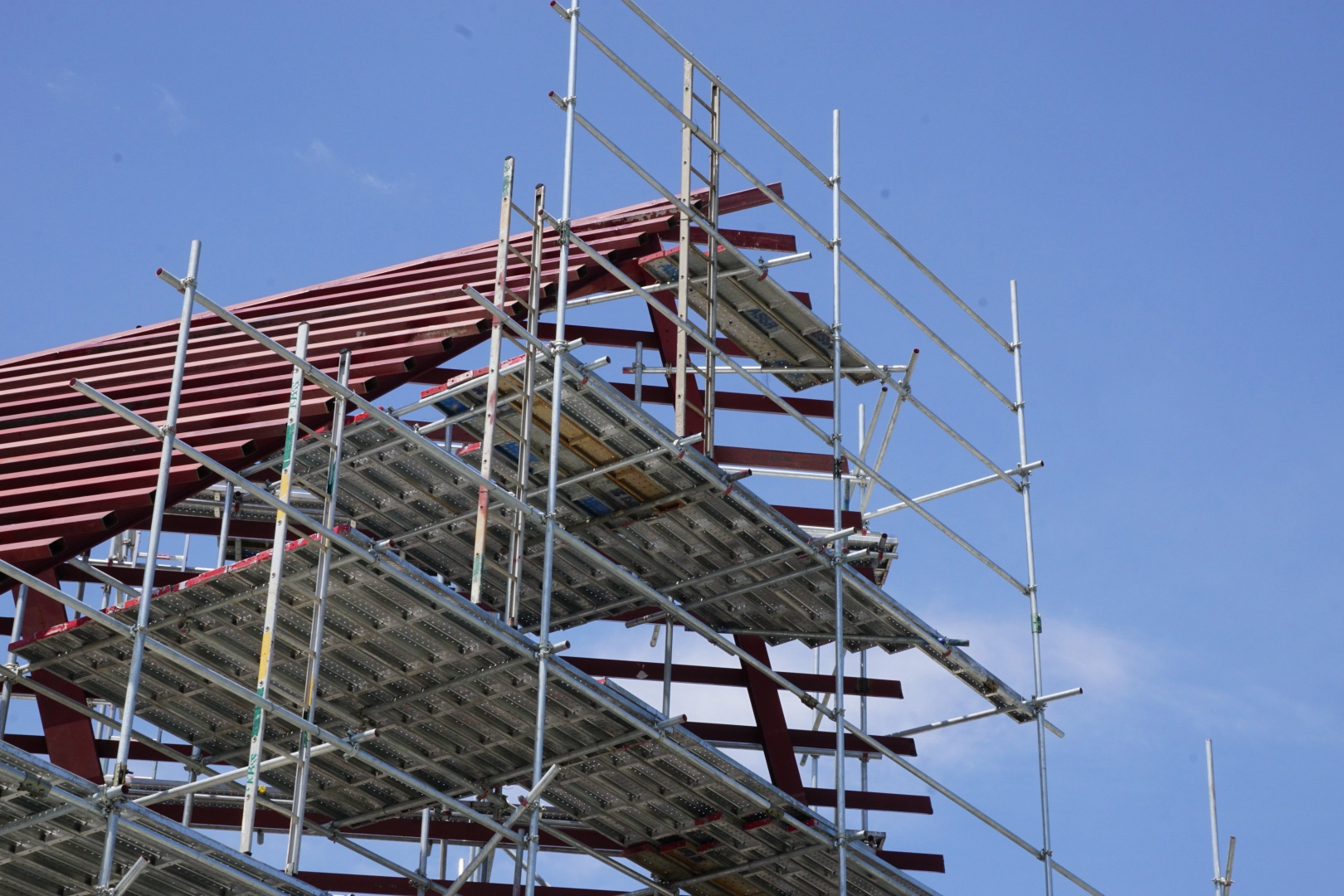
Two main types of roof coverings are used for these structures: keder and shrink wraps. Keder sheeting is made from PVC-coated polyester with welded bead edges that run inside keder rails. Once it's tensioned with the ratchets, the keder panels create a smooth, wind-resistant surface that sheds rain and resists uplift. LDPE heat-shrink wraps can also be applied around the frame and shrunk to form a continuous skin with heat-welded seams. Shrink-wraps are ideal for sealing awkward corners and preventing water from seeping through cracks or pooling.
The cover's weatherproofing ability depends on how the canopy meets the scaffold facade. At the ridges and eaves, laps are taped or heat-welded, and windward edges are double-sealed. Penetration points for chimneys, hoists or flues are finished with flexible flashings and collars to prevent capillary leaks. Edge baffles, splash aprons and drip angles are installed to stop water from curling beneath the sheet, while flame-retardant facade wraps link the roof to the perimeter screens to completely cover the roof structure.
Keep your projects dry, safe and on schedule with our temporary roof scaffolding! We can supply, install and maintain lightweight, storm-rated roof covers that divert rain, control runoff, and let in natural light. Our temporary roof scaffolds are ideal for re-roofing projects, refurbishments and heritage works.
